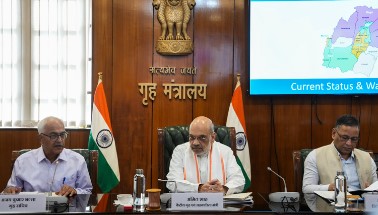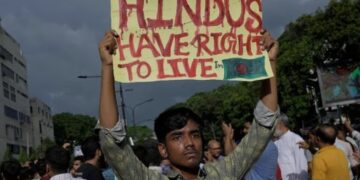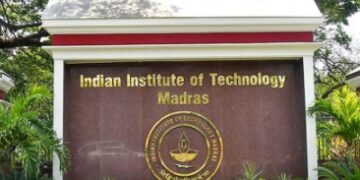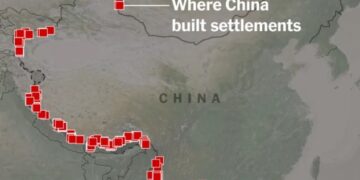In view of the persistent flood problem in the entire Northeastern region, Union Home Minister Amit Shah chaired a review meeting on preparedness for monsoon flood management.
The Home Minister suggested creation of minimum 50 large ponds in the northeast to divert and store the water of the Brahmaputra. Other than tackling floods, this move will help in the growth of agriculture, irrigation and tourism sectors at a low cost, subsequently benefiting the local economy, he added.
Apart from reviewing the preparations to deal with Glacial Lake Outburst Flood or GLOF, Shah suggested enhancement of the forecast system of river water level, maximum use of the Indian Space Research Organisation or ISRO’s satellite imagery for flood and water management.
Chaired a high-level meeting today to review flood preparedness in the country.
Issued instructions to install state-of-the-art flood monitoring systems and to take measures to fight forest fires. Also, asked the NDMA and the Ministry of Jal Shakti to study the floods in Sikkim… pic.twitter.com/SKU92MhHRt
— Amit Shah (@AmitShah) June 23, 2024
The entire Northeastern region has been facing severe impact of recurring flood in the Brahmaputra. Consequently, it leads to loss of lives, inundation of land, destruction of home, private and public properties, snapping of communication lines and road networks on yearly basis.
People in Sikkim and Uttarakhand face same consequences following flash floods created due to the glacial lake outburst, which has become another major concern during monsoon for the government.
Amit Shah asserted on making the natural drainage system an integral part of the designs of road construction to mitigate impact of floods.
He commended the leadership of Prime Minister Narendra Modi for leading forward Bharat’s disaster management with a ‘zero casualty approach’.
Shah directed the departments concerned to hold an in depth study of Sikkim and Manipur’s recent floods and submit a report to the Union Home Ministry. HE asserted the Central Water Commission or CWC’s flood monitoring centres should be in line with the requirements and of international standards.
The Home Minister highlighted importance of weather, rainfall and flood warning related apps’ integration. Besides, he reviewed long-term steps related to formulation of far-reaching flood mitigation policy and the action taken on the decisions made during last year’s meeting.
Along with this, they discussed new technologies being adopted by all the agencies and the expansion of their network for flood management.
Shah urged all States and Union Territories for timely implementation of the advisories issued by National Disaster Management Authority or NDMA and maintaining good condition of floodgates of all major dams.
He directed the India Meteorological Department and the CWC for quick completion of the process of recalibrating all flood forecast equipments. The NDMA and the Union Environment, Forest and Climate Change Ministry were directed to regularly remove dry leaves, conduct mock drills with locals and forest personnel to prevent forest fire incidents, to analyse the incidents of repeated forest fires and to prepare a detailed manual to deal with such incidents.
Shah directed that the IMD’s alerts regarding lightning strikes should be disseminated to the public on time through SMS, TV, FM radio and other media. Since the community is the first responder at the time of disaster, there should be coordination and integration in multiple community awareness programmes so that they can have the maximum result.
Union Jal Shakti Minister CR Paatil, Home Minister of State Nityanand Rai and top officials attended the meeting.

















